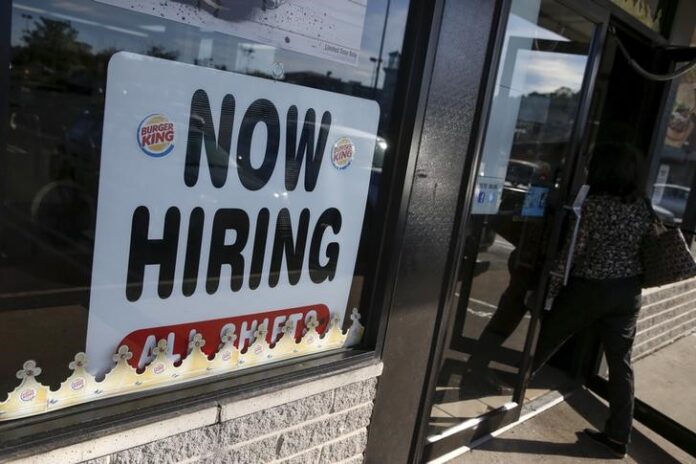By Jeph Ajobaju, Chief Copy Editor
United States national unemployment rate fell to 5.4 per cent in July, according to the Bureau of Labor Statistics (BLS), a 0.5 per cent decline on June figures and in line with a consistent dip from 6.3 per cent in January, defying the pandemic.
A total 943,000 jobs were added in July, notably in hospitality and leisure, business and professional services as well as local government. This is the lowest the unemployment rate has been since the start of the pandemic in March 2020.
There were a record 10.1 million job vacancies in June, which CNN reports as a hallmark sign of this strange pandemic labor market, as businesses struggled to hire enough staff to support the full reopening of the economy.
In the United Kingdom, job vacancy numbers surpassed pre-pandemic levels in the second quarter of 2021 (Q2 2021), according to data from the Office for National Statistics (ONS).
There were 862,000 jobs on offer between April and June – 77,500 higher than Q1 2020 – driven by vacancies in hospitality and retailing.
The twin main drivers of the vacancies are a lack of skilled workforce and Brexit which has reduced the number of British workers born in the European Union (EU).
UK-born workers are fewer, too, and immigration to the country has become more difficult.
The number of people on payrolls grew in June, showing the biggest rise since the start of the pandemic. It increased by 356,000 in June to 28.9 million, the data shows, as reported by the BBC.
Demand and supply mismatch
The mismatch between worker demand and supply has been a defining characteristic of the pandemic recovery in the US.
Hiring is rampant across industries, CNN reports, as businesses are still rebuilding the capacity lost during last year’s lockdowns.
Professional and business services, retail, hotels and restaurants added the most job openings, according to the latest BLS report.
But many jobless workers are facing complexities. Some continue to struggle with finding child care, while others are concerned about the risk of contracting the virus at work.
“If we want to sustain our economic recovery, we have to get serious about removing barriers to filling these open jobs,” said Neil Bradley, executive vice president and chief policy officer of the US Chamber of Commerce.
Specifically, Bradley added, “that includes addressing childcare needs, rightsizing unemployment programs, skills training, and increasing legal immigration.”
Economists expect that at least the child care aspect will be addressed when schools reopen in person after the summer. But the rampant spread of the Covid-19 Delta variant is adding exposure risk.
Meanwhile, the generous pandemic-era unemployment benefits that have already ceased in multiple states will run out in September, which could affect the rate of hiring as well.
Hires, layoffs, voluntary quits
In June, the number of hires rose to 6.7 million, particularly due to increased activity in retail and education.
The layoff rate was unchanged at 0.9 per cent, the lowest level on record and flat from May, while the voluntary separation rate rose to 2.7 per cent.
The uptick in the quits rate is likely due “in part to increased opportunities for workers to find better job matches, potentially with higher wages or safer working conditions in the lingering pandemic,” said Elise Gould, senior economist at the Economic Policy Institute, in a tweet.
Blacks, Hispanics, Asians still face higher jobless rate
The buoyant job openings report is further proof that America’s employment recovery picked up speed over the summer months. Between June and July, the nation added nearly 1.9 million jobs, according to CNN.
The unemployment rate fell to 5.4 per cent in July and economists are getting more optimistic that it will reach pre-pandemic levels next year: Goldman Sachs (GS) predicts 3.5 per cent unemployment by the end of 2022.
That said, the overall jobless rate is just one measure of the labour market. Participation rates are still down and even though unemployment sank across most demographic groups in July, it remains higher for Black, Hispanic and Asian workers.














